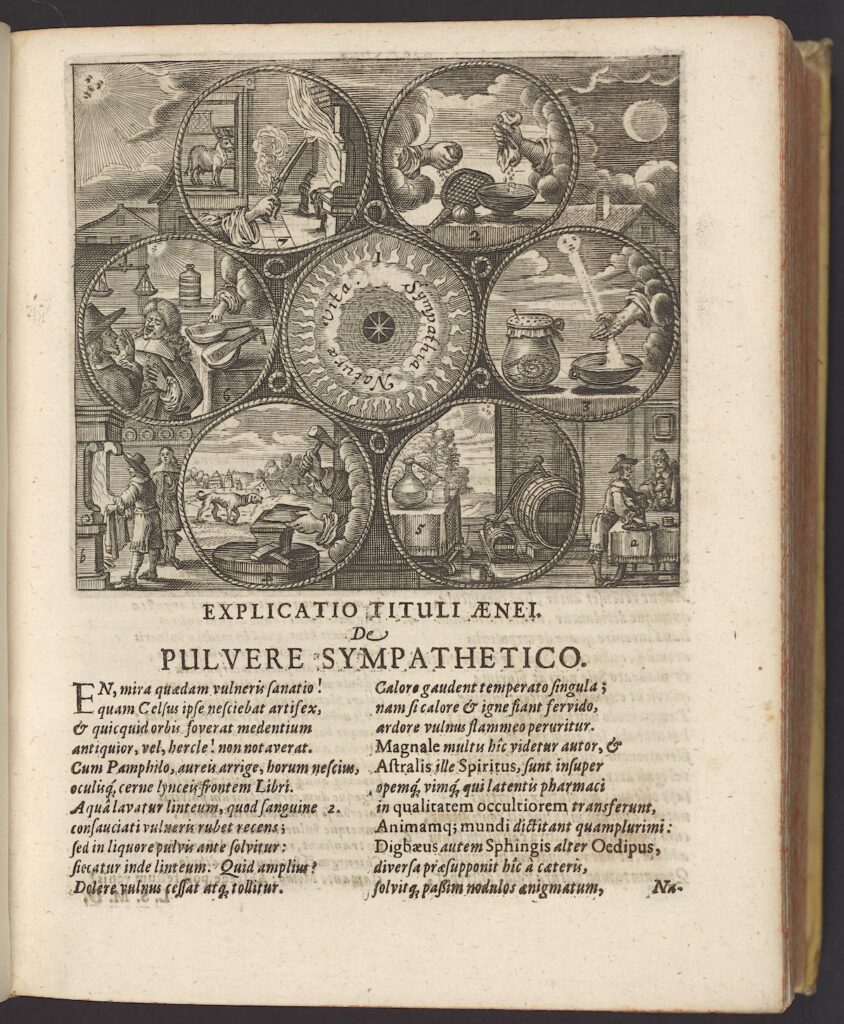A Remote Idea
Healing at a distance: Our latest rare book exhibition explores the debate over the effectiveness of the weapon salve.
On view June 2024 –December 2024
Museum Mezzanine
Have you ever tried to explain things that are invisible to the human eye—like how magnets work? Or radio? How about healing at a distance? In the 16th and 17th centuries, a wide range of experts wrestled with explaining a less familiar phenomenon known as the weapon salve.

The treatment of wounds called for moss from a dead man’s skull, human mummies, dried earthworms, turpentine, and other strange and sometimes gruesome ingredients. The mixture was then applied to the object that caused the wound—not the wound itself. While there was broad agreement in early modern Europe that this treatment worked, there was stark disagreement as to why it worked.
Our latest rare book exhibition features remarkable works that document the debate about the weapon salve’s efficacy and origins. You’ll be transported back to a time when many of the phenomena we now take for granted—magnetism, gravity, and atmospheric pressure—were still full of wonder, pushing the limits of naturalistic understanding.
A Remote Idea was curated by Judy Kaplan, Cain Curatorial Fellow, and James Voelkel, the Institute’s curator of rare books.
About A Closer Read: Stories from Our Library Shelves
A Closer Read is a new series of exhibitions featuring materials from the Donald F. and Mildred Topp Othmer Library of Chemical History. On display on the mezzanine level of the Science History Institute Museum, each exhibition uses rare books, archival materials, and modern books and journals to share new stories from the history of science. Exhibitions are on display for six months.
You might also like

DIGITAL EXHIBITIONS
Animals and the Making of Human Vaccines
Learn about the role of animals and their cells in the development of lifesaving vaccines.

DIGITAL COLLECTIONS
Health & Medicine Collection
Medications, documents, manuals, and photographs relating to biochemical research and technology.

DISTILLATIONS MAGAZINE
Medicinal Leeches and Where to Find Them
The rise, fall, and resurrection of the humble leech.
